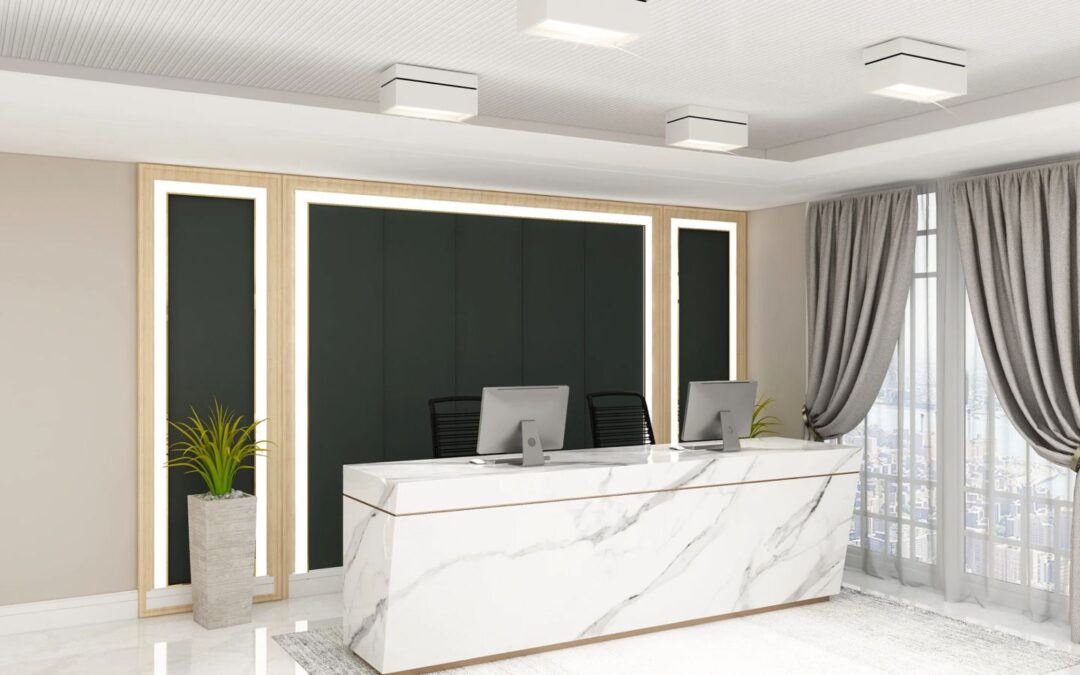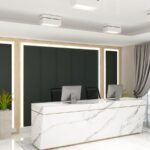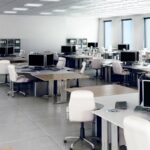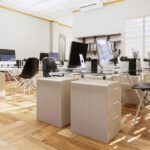Introduction
Choosing the right office furniture transcends mere aesthetics; it is a strategic decision that influences corporate identity, employee well-being, and overall productivity. The furniture in an office is not just about filling spaces but about creating an environment that reflects the company’s values and ethos. As businesses evolve, so does the need for a workspace that is adaptable, efficient, and comfortable. Essential business furniture should serve various functional and psychological needs, from enhancing collaborative workspaces to ensuring privacy in open workspaces. This guide explores how to select the best office furniture to meet these diverse requirements, ensuring that every piece contributes positively to the daily operations and culture of your business.
Reception Area: Making First Impressions Count
The reception is the gateway to your business, setting the tone for clients and visitors. It’s crucial to choose the best office furniture that combines style and function, reflecting your company’s values right from the start.
Overview of Essential Furniture: Key pieces include an elegant office reception desk, comfortable seating for guests, and practical storage solutions—all integral components of essential business furniture.
Design Considerations: Select welcoming and functional office furniture for the reception to ensure a positive first impression. Durability and ease of maintenance should be top considerations, given the high traffic typically seen in reception areas.
Workstations and Open Office Areas: Enhancing Productivity and Comfort
Efficiently designed workstations and open workspaces are the backbone of a productive office environment.
Choosing the Right Desks and Chairs: Focus on ergonomic office desks for business that accommodate a range of activities and body types. Ensure these are paired with chairs that support long hours of work without discomfort.
Optimizing Open Spaces: Modular office furniture is ideal for open workspaces, allowing for easy reconfigurations to suit evolving team sizes and projects. This flexibility is key in creating effective collaborative workspaces.
Conference and Meeting Rooms: Facilitating Effective Collaboration
Professional office furniture in meeting rooms and boardrooms should not only be functional but also promote a collaborative environment.
Key Furniture Pieces: The selection of professional office furniture for meeting rooms should include large, sturdy tables and comfortable, ergonomically designed chairs that facilitate long discussion sessions.
Integration of Technology: Modern meeting rooms require furniture that can integrate seamlessly with technology—think of pieces with built-in power solutions and cable management systems to enhance connectivity and functionality.
Executive Offices and Boardrooms: Reflecting Leadership and Values
The furniture in executive offices and boardrooms should epitomize the highest standards of your business furniture selection, reflecting leadership and core values through quality and style.
Selecting Executive Furniture: Opt for high-quality, executive-style furniture that commands respect and reflects the professionalism of the boardroom. These should blend seamlessly with the aesthetic and functional requirements of high-level executive environments.
Break Rooms and Informal Spaces: Encouraging Relaxation and Interaction
Creating inviting break rooms and informal spaces with appropriate furniture can significantly enhance employee morale and foster informal collaboration.
Furniture for Casual Interactions: Choose furniture that encourages relaxation and casual interaction, such as soft seating arrangements and communal tables, essential in any collab workspace.
Creating a Welcoming Environment: These areas should be outfitted with durable, easy-to-clean furniture that can handle daily use while offering comfort and style.
Emphasizing Sustainability and Ergonomics
Selecting sustainable and ergonomic business furniture is not only an ethical choice but also a practical one that benefits the health of your employees and the planet.
Sustainable Furniture Choices: Emphasize the use of eco-friendly materials and sustainable practices in the production of office furniture to minimize environmental impact.
Ergonomic Furniture Benefits: Ergonomic furniture is crucial for maintaining employee health and productivity, reducing the risk of strain and injury with designs that support natural posture.
Conclusion
The journey from the reception desk to the boardroom involves much more than the physical space—it encompasses building an environment that encourages productivity, fosters innovation, and supports the health and morale of every employee. Selecting the right business furniture is a testament to a company’s commitment to quality, sustainability, and ergonomic responsibility. It is an investment in the company’s future, enhancing the workplace culture and contributing to overall business success. As you consider upgrading or setting up your office, think of furniture as a key component of your strategic planning, integral to achieving your business objectives. Let this guide serve as a starting point for transforming your workspace into a dynamic and inspiring environment that aligns with your professional aspirations and values.
Enhance your office from the reception area to the boardroom with TradeGully.com. Our range of essential business furniture is crafted to enhance productivity, inspire creativity, and foster a positive work environment. At TradeGully, we help you build a future-ready workplace that epitomizes innovation and efficiency. Transform your workspace today and create an environment that is as dynamic as your business ambitions with TradeGully’s smart office solutions.
FAQs
Why furniture is essential in an office?
One of the most important aspects of any office is your furniture. It provides a comfortable and supporting place for your employees to sit, but it can also provide much-needed storage, resting areas and hybrid working environments.
What factors are to be considered while choosing office furniture?
- Ergonomics and Comfort. In today’s dynamic work environment, the importance of ergonomics and comfort cannot be overstated.
- Durability and Quality.
- Employee Health and Wellness.
- Convenience: Space Utilisation and Flexibility.
- Cost and Affordability.
What furniture is in a reception area?
Reception area furniture, also called waiting room furnishings, consists of reception desks, guest chairs, accent tables, décor and much more. When you can make your guests feel comfortable, they’ll keep coming back! Waiting room furnishings are simply a must-have for the modern office lobby.
What furniture is needed in a conference room?
Traditionally, conference room furniture includes a table, chairs and storage units. Depending on how the space is used, there may also be other furniture required such as lecterns.






